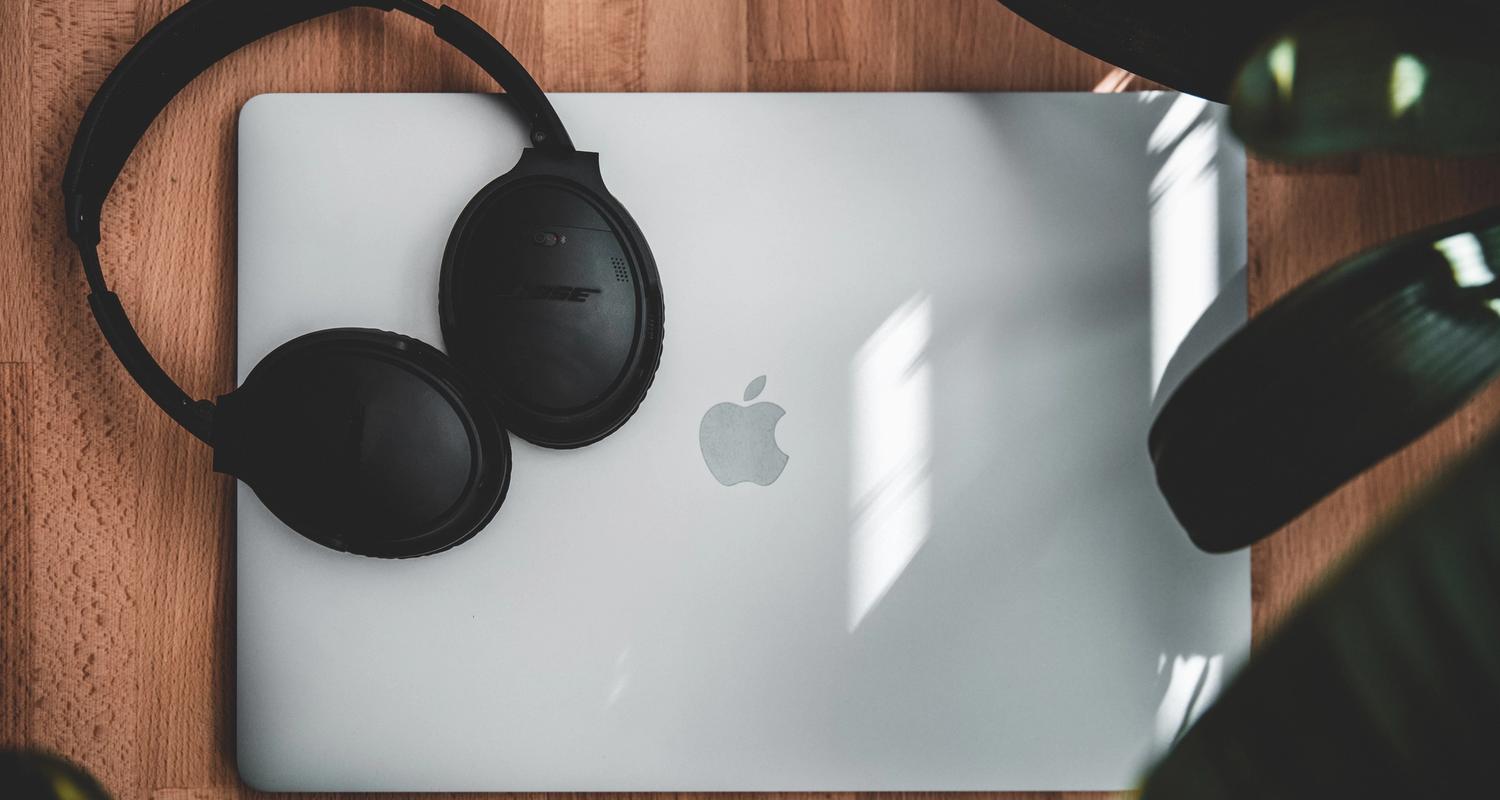In the office, it’s pretty obvious when your colleague is in Deep Work. You look over and see that she’s deep in some code. She’s in the zone, with her eyes glued to the screen. If your question isn’t urgent, you save it for later. If it’s urgent, you interrupt and get all hands on deck.
When you’re in the office, it’s also obvious when your colleague is on a break. She’ll be away from her desk. If you have a non-urgent question, you save it for later. If it’s urgent, you send a page and go looking.
While using Slack to Work From Home, you don’t have this same type of visibility. It takes a little more effort to recreate it, but it can be worthwhile and provide benefits beyond teammate visibility.
Using Slack Statuses When Working From Home
The last few weeks, we’ve been experimenting with using a set of 4 emojis to denote our current status at work: Deep Work, Deep Break, Out of Office (OOO), In a meeting.
Each of us sets a Slack Status as we transition throughout the day.
To set a Slack Status,
1. Select your photo/avatar in the top right to view settings.
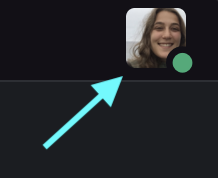
2. Click on your Status to start editing.

3. Configure available Slack statuses.
Slack comes with a couple of defaults:
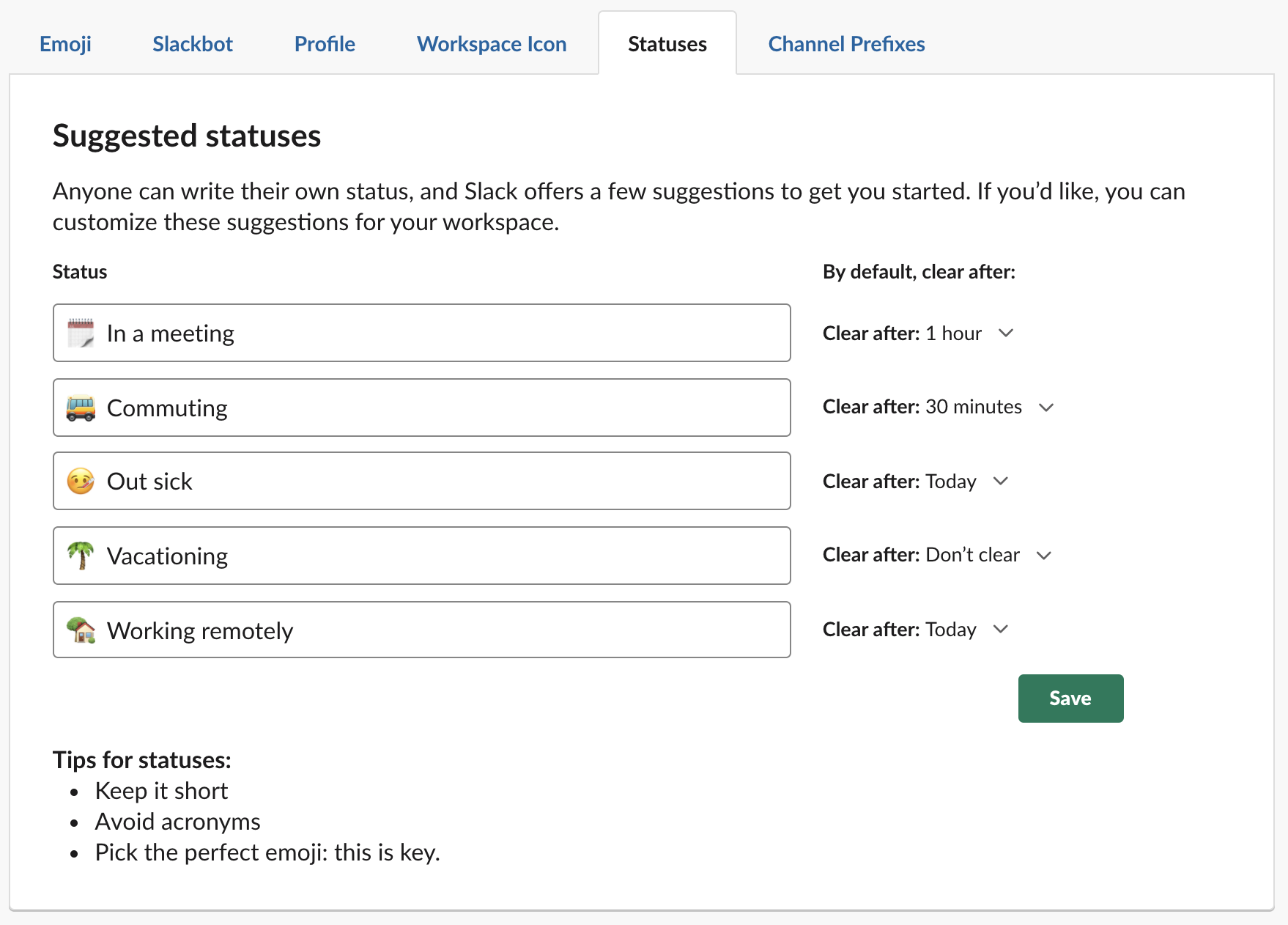
You can customize them to get the best Slack statuses for your team. This is what we use at Stashpad:

4. Select a Status and Clear time.
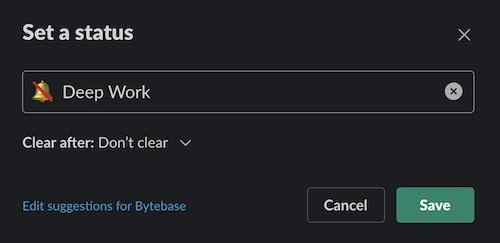
5. Now your Status is updated!

More seamless collaboration
Our original goal in testing this out was to see if it would make collaboration more seamless. Just like in the office, it’s useful to know if someone is available to jump in and pair or if they’re unavailable. It can be puzzling to ping someone and not get a response for a while. And it’s distracting to receive non-urgent communication when you’re in the middle of something. Knowing what teammates are up to lets you adapt your plan for the day.
With Slack remote work statuses, we know when a teammate is in Deep Work, on a break, or available to jump in with us. It’s a lightweight way to reduce friction to collaborating.
More Deep Work, More Deep Breaks
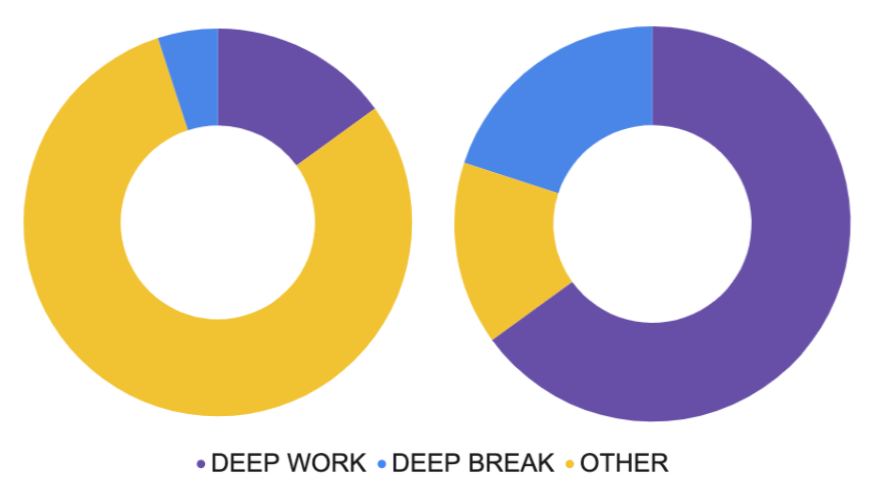
There are two factors that have resulted in each of us spending more time in Deep Work or in Deep Break/Out of Office:
- Team accountability
- Personal intention setting
Team accountability
As a team, we especially value Deep Work and Deep Breaks. Deep Work is when we problem-solve. It’s productive and it’s satisfying. Deep Breaks allow us to recharge and enjoy time outside of work. They’re essential to prevent burnout. Slack Statuses help us hold one another accountable in how we spend our time.
Statuses create a good opportunity for reflection as a team. When a teammate doesn’t have enough uninterrupted Deep Work, we can look into what busy-work or other challenges are getting in the way. When a teammate is in “Deep Work” at ten at night, that can also be worth discussing. Everyone has their own working style but it’s important to have time for full breaks in order to avoid burnout. Ten at night would usually be a break time.
However, we found team accountability isn’t the biggest advantage of using Slack Statuses.
Setting intention
When I set my Slack status emoji to be “Deep Work,” it’s in my best interest to not actually be on twitter or reading articles. I’m setting my intention for the next period of time. This reduces the likelihood that I mindlessly go down some rabbit hole that is not actually in line with my priorities for the day.
Likewise, when I’m on a “Deep Break”, I better not be checking Slack or email. My teammates know I’m on a Deep Break and will reach me via page / call if I’m needed.
When I set my emoji to “Home,” like an out of office emoji Slack this means I’m done for the day. I shouldn’t be coming in at a random time and coding. I’m meant to be relaxing, not doing random scattered work outside of regular hours.
My goal is to maximize Deep Work and Deep Breaks. When I notice I’ve been “working” for a while, I pause and choose either a Deep Work or Deep Break direction instead.
Deep Work
Deep Work is the most satisfying and fulfilling part of the work day. It’s time spent problem-solving and building. It’s fun and it’s fulfilling. It also takes a lot of energy - it’s not possible to spend your whole day in Deep Work every day.
Deep Break
Deep Breaks or time completely off the clock are essential too. They’re a lot harder to protect with WFH because it’s easy to let yourself drift back into work mode. But by setting my intention, I have more full breaks, without guilt or feeling like I need to respond to messages immediately.
Areas for improvement
After experimenting with Slack Statuses as a tool for remote work, we ran into a few opportunities for improvement.
Forgetting to Set the Slack Status
We’ve run into issues where we start Deep Work and forget to set that as our intention. I.e., something that started as more shallow work becomes Deep Work where I am not available to respond to messages. Likewise, a break where I’m not available to respond can start suddenly when something comes up at home. This lack of visibility can lead to confusion.
Unexpected Clear Status Behavior
When you set ‘Deep Work’ as your focus for one hour, it will clear to a state where no Status is set. Most likely, you’re still in Deep Work but Slack doesn’t re-affirm this. Our workaround is to have the Statuses never clear, but this results in the above problem (forgetting to set the Status).
Limited Data Insights
Insights have to be based on intuition - there’s no tracking linked to Status usage. It would be helpful to see a breakdown of time spent in Deep Work, and Deep Break/Out of Office to see how we can keep improving!
Avoiding Micromanagement
It’s valuable to use Statuses to protect Deep Work and Deep Breaks from interruptions. It’s not healthy for a team to use Statuses to create guilt around how you structure your day. If your coffee break goes long but you’re available to respond in Slack, it’s unnecessary to broadcast that you’re on a “break.” Statuses aren’t for micro-managing, they’re for you. That’s why we’ve chosen our Slack Status suggestions to be Deep Work, Deep Break, and Out of Office. We intentionally do not have one for ‘Working’ because that’s assumed to be the baseline case and is too conducive to micromanagement.

